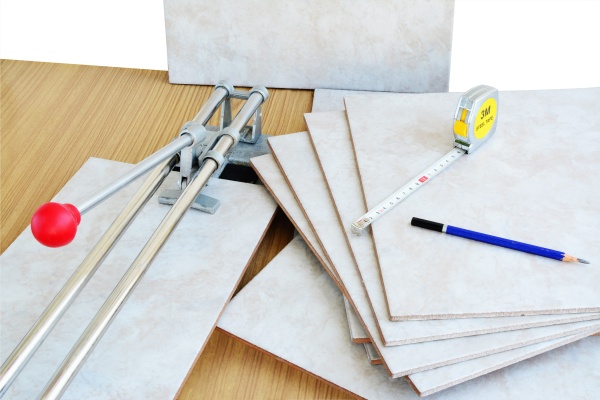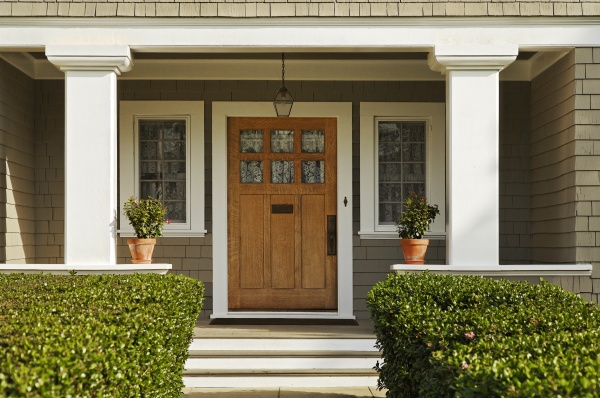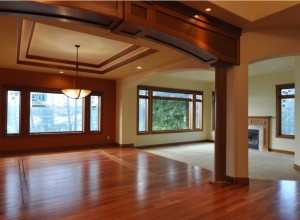Tile is a beautiful addition to any home! It brings in class and visual appeal. Tile has a timeless look to it, and is a sturdy choice that provides longevity to your floor. Bringing tile in your home is an investment that you will be able to enjoy! When considering this decision, there’s a few elements to assess.
 The first question is the why. Why are you choosing to tile? There are many benefits that tile brings, and one must consider the commitment involved in the decision to tile. Being extraordinarily durable also makes it permanent. A job well done will add value to your home, but a job poorly done is expensive to replace, and very difficult, sometimes impossible, to correct. If prepared to make the investment for a good tile job, though, it will bring many benefits to your home. Tile is fire resistant, slip resistant, and easy to clean and maintain. This makes it both a beautiful and convenient choice.
The first question is the why. Why are you choosing to tile? There are many benefits that tile brings, and one must consider the commitment involved in the decision to tile. Being extraordinarily durable also makes it permanent. A job well done will add value to your home, but a job poorly done is expensive to replace, and very difficult, sometimes impossible, to correct. If prepared to make the investment for a good tile job, though, it will bring many benefits to your home. Tile is fire resistant, slip resistant, and easy to clean and maintain. This makes it both a beautiful and convenient choice.
Before you decide to tile, you should first assess the area you want tiled. What subfloor do you have? Are there any cracks or dents? What condition is the floor in? Addressing these issues early will help prevent the tile from cracking, will make the process much quicker, and may greatly influence your decision. To tile you need a sturdy, level subfloor. Though not always necessary, it is often advised to install a concrete backer board depending on the kind of subfloor that you have. When properly installed, the board will provide a leveled, unblemished base allowing for a quick transition to tiling.
Once confident that you have a level and sturdy subfloor, it’s left to you to choose a design. This is the fun part as you get to use your creative eye and pick a design that suits your home! Depending on the size of the space, you may decide to choose more than one tile for added complexity and design. There are many popular layouts used, from basic, to checkered, to offsets. More complex designs will require a more experienced hand.
Many people have done their own tiling jobs, and you may be one of them. The tools are available for purchase and generally inexpensive enough for the average homeowner to obtain. However, because tiling is such an important commitment and large investment, we highly recommend you hire a professional if you have never tiled on your own, or are uncomfortable with any part of the process. This is especially crucial if you have a complex design, an awkward room layout, many corners, or anything round. When you are ready to take this step, we will gladly recommend the perfect contractor for your job!
Before tiling, the room will need to be completely cleared, the old flooring removed, and the subfloor completely leveled and cleaned. It is important that there is no debris leftover before the tiling starts, as lingering debris will cause the adhesive not to bond with the floor, and damage the integrity of the floor. Gaps also need to be filled and rises corrected. Any leftover gaps or rises will become weak points down the line and take away from the long term durability of your floor.
A tile job well done is a beautiful addition that will add beauty and value to your home. It’s an investment that shouldn’t be made lightly, but always made in confidence. When you are ready, should any part of the process seem uncomfortable, hire a professional to make sure the job gets done right! At Responsible Contractors, we aim to bring you the best in each industry, and will gladly recommend a floorer you can trust with confidence. Too find one, visit responsiblecontractors.com! Happy tiling!
 Especially important if you’ve noticed a cool draft in the entry way or hear wind leaking through the door, there’s a few things you can do to weather your door and increase your energy efficiency. The first thing to check, more common with older doors, is the hinges. This can take you as little as five minutes. Open the door halfway, and lift up at the door handle while watching the hinges. Your door should stay firmly in place. If it moves up and down you may have a loose hinge. Tightening these alone will solve some draft problems.
Especially important if you’ve noticed a cool draft in the entry way or hear wind leaking through the door, there’s a few things you can do to weather your door and increase your energy efficiency. The first thing to check, more common with older doors, is the hinges. This can take you as little as five minutes. Open the door halfway, and lift up at the door handle while watching the hinges. Your door should stay firmly in place. If it moves up and down you may have a loose hinge. Tightening these alone will solve some draft problems. Building a home, however, is no small jump! There is a lot that goes into the process and for many homeowners it can be overwhelming. That’s why ACC Custom Homes handles every step of the process, including financial qualifying assistance, land acquisition, custom design, complete lending program, bid processing, construction permits, and state and local inspections. In their words, ACC Custom Homes will “prepare your bid package and build your dream house from the first nail driven to the last piece of grass in the front yard.” They rise above and beyond the general expectations of a construction consulting service, all to your benefit.
Building a home, however, is no small jump! There is a lot that goes into the process and for many homeowners it can be overwhelming. That’s why ACC Custom Homes handles every step of the process, including financial qualifying assistance, land acquisition, custom design, complete lending program, bid processing, construction permits, and state and local inspections. In their words, ACC Custom Homes will “prepare your bid package and build your dream house from the first nail driven to the last piece of grass in the front yard.” They rise above and beyond the general expectations of a construction consulting service, all to your benefit.